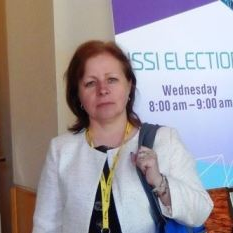Electrochemically and Electrophoretically Deposited Thin Films and Their Applications
A special issue of Coatings (ISSN 2079-6412). This special issue belongs to the section "Surface Characterization, Deposition and Modification".
Deadline for manuscript submissions: closed (30 September 2022) | Viewed by 4408
Special Issue Editors
Department of Environmental Economics, School of Economics and Management, Ural Federal University, Yekaterinburg 620002, Russia
Interests: “green” energy; hydrogen production; solid oxide fuel cells; solid-state electrolytes; electrode kinetics; thin-film technology; nanotechnology; electrophoretic deposition
2. Department of Physical and Inorganic Chemistry, Institute of Natural Sciences and Mathematics, Ural Federal University, Yekaterinburg 620002, Russia
Interests: solid oxide fuel cells (SOFC); thin-film technology; electrophoretic deposition (EPD); stable suspensions; nanoscale materials; electrochemical properties
Special Issues, Collections and Topics in MDPI journals
Special Issue Information
Dear colleagues,
We would like to invite you to submit your works to a Special Issue on “Electrochemically and Electrophoretically Deposited Thin Films and their Applications”. A thin film is a layer of material with thickness ranging from fractions of a nanometer to several micrometers. Thin films play an important role in the development and study of materials with new and unique properties. Advances in thin-film deposition techniques have enabled a wide range of technological breakthroughs in many industrial areas. Among the known methods for producing thin-film coatings, the methods of electrochemical and electrophoretic deposition (EPD and ELD) are distinguished by their flexibility of application, the possibility of applying various materials on a complex surface, the low cost of equipment, the ability to obtain films of a given thickness by controlling the deposition parameters and the short timeframe required. The scope of these deposition methods differs significantly – from electrochemical devices, such as fuel cells, batteries, supercapacitors, various sensors and MEMS devices, to thermal protective, hardening and decorative coatings, and even biomolecules, such as enzymes and proteins.
For this Special Issue, we are inviting you to present original papers or reviews on the latest experimental and theoretical developments in the field of electrochemical and electrophoretic deposition of thin-film coatings. Topics of interest for this Special Issue include, but are not limited to the following:
- Latest theoretical and experimental studies in the field of the formation of thin-film structures by ELD and EPD for energy storage and generation devices
- Application of ELD and EPD in additive technologies
- ELD and EPD for the formation of multifunctional organic and inorganic, hybrid, nanostructured coatings using nanoparticles, carbon nanotubes, graphene, polymers, metals, alloys
- ELD and co-deposition (combined with EPD or other methods) of metal and composite protective coatings
- Deposition in modulated electric fields
- New methods of characterization of EPD and ELD thin-film structures.
- Methods of computer simulation of the processes of formation of thin films and methods for predicting their properties.
- Novel experimental setups for ELD and EPD
Dr. Elena Pikalova
Dr. Elena Kalinina
Guest Editors
Manuscript Submission Information
Manuscripts should be submitted online at www.mdpi.com by registering and logging in to this website. Once you are registered, click here to go to the submission form. Manuscripts can be submitted until the deadline. All submissions that pass pre-check are peer-reviewed. Accepted papers will be published continuously in the journal (as soon as accepted) and will be listed together on the special issue website. Research articles, review articles as well as short communications are invited. For planned papers, a title and short abstract (about 100 words) can be sent to the Editorial Office for announcement on this website.
Submitted manuscripts should not have been published previously, nor be under consideration for publication elsewhere (except conference proceedings papers). All manuscripts are thoroughly refereed through a single-blind peer-review process. A guide for authors and other relevant information for submission of manuscripts is available on the Instructions for Authors page. Coatings is an international peer-reviewed open access monthly journal published by MDPI.
Please visit the Instructions for Authors page before submitting a manuscript. The Article Processing Charge (APC) for publication in this open access journal is 2600 CHF (Swiss Francs). Submitted papers should be well formatted and use good English. Authors may use MDPI's English editing service prior to publication or during author revisions.
Keywords
- Thin film technology
- Electrodeposition
- Electrochemical interface
- Electrophoretic Deposition
- Stable suspensions
- Substrate treatment for deposition
- Deposition parameters
- Deposition setup
- Modulated electric fields
- Materials and thin-film characterization






